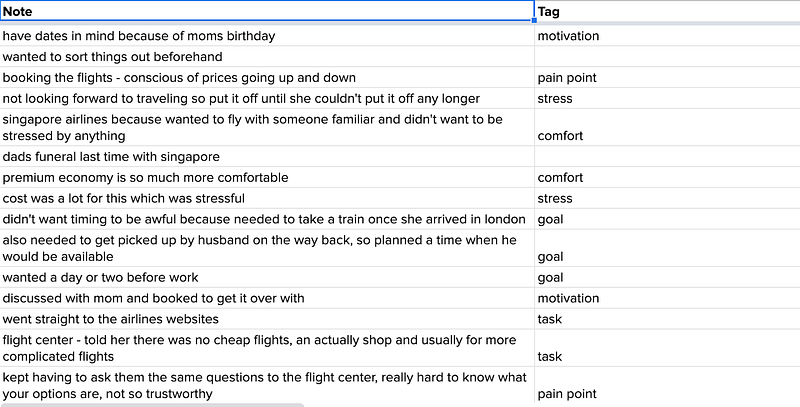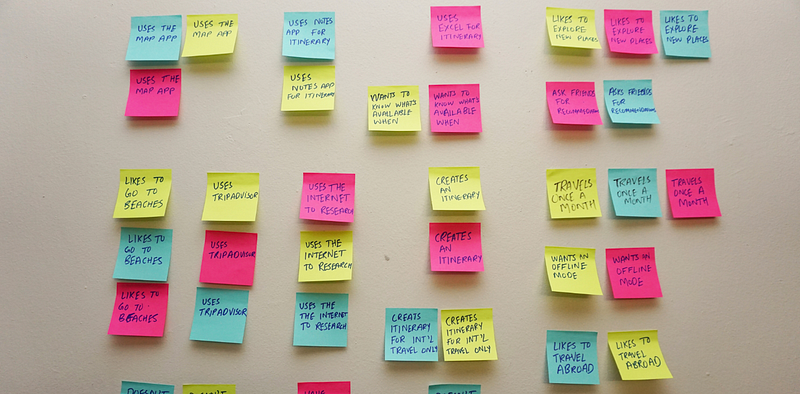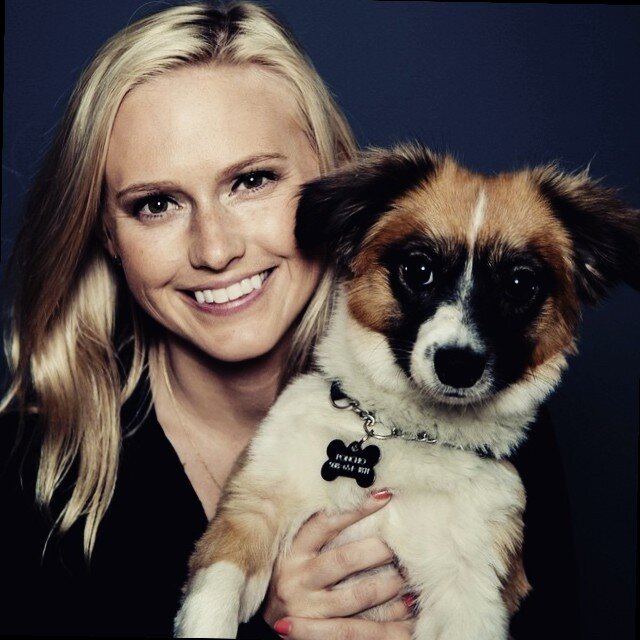Jobs to be done personas
Focus on the job, and all else will follow.

There are so many different types of personas, it can sometimes make your head spin. And, oftentimes, people don’t generally like any of them. When describing personas, people use “useless,” “confusing,” “stupid,” and many other negative words. I have had people tell me to use them and others who tell me to avoid them…and, like most, people who throw their hands in the air, unsure of what to do.
Regardless, I have a soft spot for personas. I truly believe, with the right lens and mindset, they are a great tool to be used for innovation and decision-making. Personas are fictional characters that embody the typical characteristics of different user groups. See here: they are a fictional embodiment. We have forgotten that personas are a tool to be used, not the answer to all of our questions, or the solution to all of our problems.
How I use Personas
The reason I create personas is to help my teammates understand the story and the relevant context of our users. I’m not just trying to shove as much information as possible on to an A4 poster. I want to help my team make decisions with the information I give them. I believe, if we are mindful of how we use them, they can be excellent tools that can help guide teams towards better decision-making and innovation
What are the benefits?
- Set the focus
- Empower product and design to make better decisions
- Builds empathy for the users and promotes a user-centered mindset
- Make our assumptions explicit
- Keeps users at the center
- Show the realistic
- Helps to inform user stories
- Aligning the organization on the same language
Now on to Jobs To Be Done Personas…
First off, let’s start off with a small explanation of Jobs To Be Done:
Jobs To Be Done encompasses the concept that users are trying to get something done, and that they “hire” certain products or services in order to make progress towards accomplishing goals. Usually, we all want to be better than we are in a given moment. We all have goals that lead us closer to our ideal self. So, we will look for, and purchase, certain products or services when our current reality does not match what we want for the future.
With Jobs To Be Done, we are completely solution-agnostic. We aren’t even thinking about our product or any products in general. We are focused solely on people’s motivations and how they act. We try to identify their anxieties and the deeper reasons of why they act the way they do, and why they respond in certain ways.
For instance, if we have a travel product that allows people to buy all types of travel tickets online (bus, car, plane, scooter, you name it), we focus our research on how people are using this website/app and how they buy tickets online. However, when you think about it, people didn’t buy tickets online in the past, so this kind of platform didn’t exist back then. And in ten years, there will probably be a new way to buy tickets we don’t even know about yet.
The point is, people still need to travel for various reasons. That job remained stable throughout the years, and the solutions created for it have changed. People will use different products that allow them to get their job done in a faster, better way.
So, if you are just focused on the best ticket buying experience, you will be relevant for some time, but, eventually, competitors will overtake you. Instead, we need to focus on the job people are trying to accomplish: getting from one place to another in the fastest and easiest way possible.
If you look up Jobs To Be Done Personas, you will often find articles called: “jobs to be done versus personas.” When you put these two concepts together, it is usually an either/or conversation. They don’t seem to be able to exist together, in harmony. Most people believe you either do JTBD research or you have personas. I, however, disagree. I believe there is space for a JTBD persona.
How to Create JTBD Personas
Creating JTBD personas is fairly similar to the process of creating other personas. There is a lot of research, analysis, and synthesis. Below is how I created our first JTBD personas.
- Do JTBD research. The first, and most important step, in creating these personas is to do the foundational research. I interviewed around 20 people in this style of interviewing before I started to come up with the concrete personas. Some people say you can make them with less, some only with more. Either way, it is whenever you feel comfortable enough with the data you have gathered. Keep in mind, these will keep changing, so nothing is set in stone. If you have never done JTBD research, feel free to read my guide: https://dscout.com/people-nerds/the-jobs-to-be-done-interviewing-style-understanding-who-users-are-trying-to-become
- Define the goal of the persona. What is it that you are trying to accomplish with your persona? There are several different goals you can have when creating a persona. Below are the various reasons I have created them:
- Show colleagues who our customers are
- Highlight the behaviors of user groups
- Present high-level motivations of users to highlight the why behind certain behaviors
- Tell a story of a user’s life and how they operate when they want to accomplish a certain task
3. Decide on the information to include. I always do this before synthesis so I know what I am looking for when I comb through the data. JTBD personas include slightly different information than what I would put in more “traditional” personas.
- Motivations. I believe motivations are the most important part of the JTBD interviews, and the most important information to include in the personas. JTBD highlights the motivations behind our actions. I separate motivations into three different categories: ideal self, experiential self, and social self.
Ideal self motivations: What is getting the person closer to their ideal self? What are they doing to get there?
Experiential self: What is that person trying to experience in order to get closer to the ideal self? How do they want their environment to impact you?
Social self motivations: How is the person trying to be seen by others? How do they want their relationships to function and get them closer to the ideal self?
- Values. What does the person, at a high-level, value in day-to-day life? What are the concepts or ideas that are important to them?
- Needs. What does the person need on a day-to-day basis? What is important for them to have to accomplish their goals?
- Pain points. What is a painful experience for that individual? What do they try to avoid? What causes them anxieties?
- Goal (or job). What is the goal (or job) they are trying to accomplish? What is the outcome they would like to achieve?
4. Pull together the information. Read through all of the transcripts and notes that you have gathered from the research. One thing I do is tagging each important transcript line with one of the above points (motivation, pain point, goal, etc.). See an example below:

I then will create an affinity diagram with all the research I conducted and once I am done tagging. This is where I group all of the similar patterns I hear and cluster them into categories, such as motivations, values, pain points, etc. See an example below:

5. Outline the persona. Create version one of the persona. Include all the information you think might be relevant. Again, we are trying to help teams understand motivations of why someone acts the way they do, why they might use a product, and also tell a story of that person.
6. Design the persona. Putting this information into a visual format is the last step. Try not to do this before you have all the information together. Additionally, you don’t have to go crazy with graphics, as they usually aren’t helpful for a team. There are these bars that indicate people’s personality traits on a spectrum, and they are infuriating to me. They aren’t beneficial at all to a team making a decision. Keep the persona simple.
My most significant piece of advice when creating a persona: don’t just blindly use one of the many templates available. Although some may be beautiful (while others are undoubtedly ugly), they won’t serve you. First, come up with your goal and the relevant information needed for that goal. Then start creating the visual.
My second piece of advice: don’t make anything up. Delete all false or dramatized information. It will only get in your way when making decisions and could lead the team astray. You want your personas to be based on real user data.
I will do a more in-depth case study highlighting what this might look like with a real-life example. Until then, I hope this was helpful!
